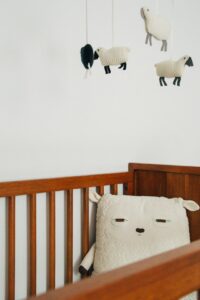Introduction to nursery rhymes meanings
Nursery rhymes meanings are speculated and debated. The rhymes themselves are an integral part of childhood, offering not just amusement but also a possible window into the cultural and historical contexts of the times in which they were created. These seemingly simple verses are often loaded with meanings, some of which date back centuries.
Nursery rhymes serve as a testament to the socio-political events, cultural practices, and even historical figures of their era. This article tells the history and reasons behind 10 famous nursery rhymes meanings, uncovering stories and speculations that have contributed to their enduring appeal.

“Baa Baa Black Sheep”
One of the most well-known nursery rhymes, “Baa Baa Black Sheep” is often thought to reflect the medieval wool tax imposed in 13th-century England, highlighting the economic importance of the fiber to the British economy. Interpretations vary, and some see it as a wider commentary on the distribution of wealth and social injustice.
“Ring Around the Rosies”
“Ring Around the Rosies” is frequently associated with the Great Plague of London in 1665. The symptoms, spread, and smell of the disease are said to be depicted in the rhyme’s lyrics. That is widely debated among historians, but it sure does seem to make sense.
“Mary, Mary, Quite Contrary”
This rhyme is believed to have roots in the religious and political turmoil of England. “Mary, Mary, Quite Contrary” may refer to Queen Mary I of England, her attempt to restore Catholicism, and her marriage to Philip of Spain. The “garden” in the rhyme is speculated to symbolize the country, and the “silver bells and cockle shells” are theorized to represent torture devices.
“Humpty Dumpty”
Often portrayed as a raw egg, first in its shell, and then broken on the ground, “Humpty Dumpty” lacks any reference to such a form in the original rhyme. It’s speculated to have been a riddle whose answer was once widely known but has since been lost. Some theories suggest Humpty Dumpty was a cannon used during the English Civil War, which fell and could not be repaired.
“Jack and Jill”
The origins of “Jack and Jill” are debated, with some suggesting it is a story of young lovers. Others believe it to be rooted in the taxation practices of old England. The phrase “Jack and Jill” has been used in various contexts over the centuries, making its true origin hard to pinpoint.
“London Bridge is Falling Down”
This nursery rhyme possibly recounts the various disasters that have befallen the historical bridge across the Thames River in London. From Viking attacks to fires, “London Bridge is Falling Down” might have served as a mnemonic device to preserve the bridge’s tumultuous history.
“Twinkle, Twinkle, Little Star”
“Twinkle, Twinkle, Little Star” is a delightful lullaby that introduces children to the wonders of the night sky. Its lyrics, written by Jane Taylor in the 19th century, are a celebration of curiosity and the beauty of the stars, making it a gentle introduction to the concept of space for young minds.
“Hey Diddle Diddle”
The nonsensical nature of “Hey Diddle Diddle” has puzzled interpreters for centuries. Its seemingly absurd elements might be precisely what has contributed to its popularity, allowing for a wide range of imaginative interpretations and making it a favorite among children for its playful language and imagery.
“Three Blind Mice”
Allegedly referring to Queen Mary I’s reign and her persecution of Protestants, “Three Blind Mice” may have political undertones, with the “three blind mice” representing three Protestant bishops. The rhyme’s dark humor and catchy melody have helped it remain popular over the years.
“Hickory Dickory Dock”
This rhyme is often associated with the astronomical clock in Exeter Cathedral, England. “Hickory Dickory Dock” could have been used to teach children about clocks and telling time, reflecting the human fascination with timekeeping and the passage of time.
“This Little Piggy”
This one has traumatized so many people because they learned the meaning as adults, not when they should have learned it: when they were children. What is the meaning? Pigs are food. One of the pigs goes to market (is sold to be butchered). Some aren’t ready yet but will be soon. Some think they are being starved by the farmer. By the way, it doesn’t make sense for a farmer to do that.
Our society has become so far removed from food production that most people have no idea where their food actually comes from. I’ve seen newspaper articles where someone said people should not go hunting, they should just get their meat at the grocery store, where no animals have been harmed.
I’ll let that sink in.
According to AmericanSongwriter.com, the first line of the rhyme appeared in a medley song called “The Nurses Song” in 1728. The first known full version was recorded in The Famous Tommy Thumb’s Little Story-Book, which arrived first in London in 1760.
In that version, the rhyme goes:
This pig went to market,
That pig stayed home;
This pig had roast meat,
That pig had none;
This pig went to the barn’s door,
And cried week, week for more.
Week or weak? I believe it’s onomatopoeia—a word that imitates a sound. Examples are oink, tweet, buzz, hiss, hiccup, and pop.
Impact of nursery rhymes on child development
Poems, songs, and stories play a crucial role in early childhood development. Nursery rhymes meanings affect us, too. All of these aid in language acquisition. According to Merriam-Webster Dictionary, bowwow theory postulates that language developed from imitating animal sounds. Anyone who has spent time with babies and toddlers knows that some of their toys make animal sounds and children delight in imitating them.
Nursery rhymes also help improve memory and cognitive skills and introduce rhythm and rhyme. Through repetition and music, they enhance a child’s auditory perception and linguistic abilities, making them an essential part of early education.
Nursery rhymes in modern times
In the digital age, nursery rhymes have found new life online, with countless animations and sing-along videos making these classic verses more accessible than ever. This digital resurgence has ensured that nursery rhymes continue to be a fundamental part of children’s lives, bridging the gap between tradition and technology.
Global variations of nursery rhymes
Nursery rhymes meanings and words vary significantly across cultures, reflecting each society’s unique history, values, and traditions. This global diversity showcases the universal appeal of these simple verses and their ability to adapt to different cultural contexts, enriching the global cultural tapestry.
The darker side of nursery rhymes
While these little ditties are beloved by many, some nursery rhymes meanings are from darker histories and interpretations. They often reflect the hardships, conflicts, and societal issues of their times, serving as a mirror to the past and reminder of the complexities of human history.
Preservation and Continuation of Nursery Rhymes
The continued popularity of nursery rhymes depends on their preservation and transmission through generations. Families, educators, and cultural institutions play a vital role in keeping these traditional verses alive, ensuring that they continue to enchant and educate future generations.
Conclusion
Nursery rhymes meanings go deeper than just being simple songs for children. These chants are a window into the past, reflecting the historical, cultural, and social dynamics of their times. Through the exploration of the history and reasons behind nursery rhymes, we can uncover a rich tapestry of human experience, emotion, and tradition—along with a lot of speculation. Timeless verses continue to captivate, educate, and entertain, proving that nursery rhymes will always hold a special place in our hearts and heritage.
If you write fiction, whether it’s your own nursery rhymes or something else, check out our fiction writing program.
If you write nonfiction, this writing program is for you.














